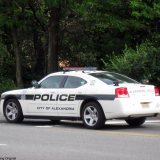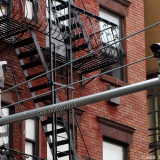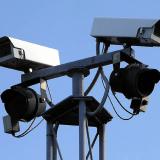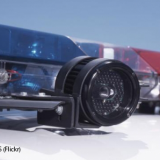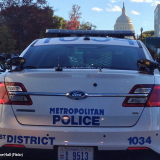Automatic License Plate Reader

Image Gallery
Most police departments use ALPRs to find stolen cars and cars connected to Amber Alerts or arrest warrants. High-speed cameras capture images of the license plates of passing cars and then log the plate number along with the date, time, and location of the “plate read” in a massive database. The system then compares each read against a “hot list” of license plates linked to stolen vehicles, Amber Alerts, and arrest warrants. Some departments even use them to aid in parking enforcement.
Departments frequently store the plate reads even if there is no match to with the “hot list,” meaning that the vast majority of the stored data concerns cars and drivers with no connection to criminal activity. The database of license plates and location information can then be analyzed by the government to generate leads for criminal investigation and reveal personal information about innocent people.
CIVIL LIBERTIES CONCERNS
Many departments store plate reads for long periods of time even if there is no match.This means that location information about innocent people is maintained in a police database. As the database of plate reads grows, it stores the sensitive location information of more and more people in greater and greater detail. In addition, with mapping software, police can use ALPR data to discover the places that a particular car travels and visits often. Police can use the ALPR data collected over a very short period to reconstruct the movements of innocent drivers, potentially leading to all sorts of abuses. For instance, officers might use ALPRs to log all vehicles parked at a lawful protest, place of worship, or gun show. An officer with access to the database might use it to track the movements of his bosses, romantic interests, or political rivals. And ALPR data is available to all as a public record. That means that a business owner could use it to spy on her employees or competitors, or a stalker could use it to track his target.
United Kingdom police researchers developed automatic license plate readers in 1976 to help locate and intercept suspected car bombs, but they didn’t see widespread use until the 1990s. Advances in data storage and wireless communications have expanded their range of uses – and their potential for abuse.
- ALPRs contain both infrared and color cameras to optimize their scanning capacities. The IR camera reads the reflective paint on most state license plates, allowing it to isolate the letters and numbers of a license plate. The color camera catches the make, model, and color of the car.
- ALPR networks include stationary units placed on traffic signals and mobile units installed inside patrol cars. Some new models can read plates across three lanes at speeds of up to 200 mph. Most read thousands of plates each minute.
- License plate numbers captured through the camera, together with precise location information – are sent to a central database. A computer (sometimes local to the camera and sometimes in the cloud) compares the license plate captured by the camera against “hot lists” of vehicles of interest to law enforcement. If a car is a match, the system notifies the appropriate officers.
A 2011 study of 70 police departments by the Police Executive Research Forum found that three-quarters of the departments already use ALPR systems. Even more planned to buy or increase their use of the equipment. Some private towing companies, creditors, and repossession firms attach ALPRs to vehicles they use and in many cases sell and purchase ALPR data to and from other companies.
Many agencies have set up ALPR data-sharing agreements with each other. These agreements create massive multijurisdictional databases that collect and store information about the movements of drivers across enormous geographic areas. In February 2014, the Department of Homeland Security issued a request to create a national ALPR database that would gather data from thousands of local, state, and federal agencies. Private companies may contribute to the database as well.
Examples of Use
When government agencies consider acquiring and using surveillance systems, communities and their elected officials must both weigh the benefits against the costs to civil liberties and carefully craft policies and procedures that help to limit the negative effects that surveillance will have on fundamental rights. For a useful list of considerations, please visit the recommendations page.
